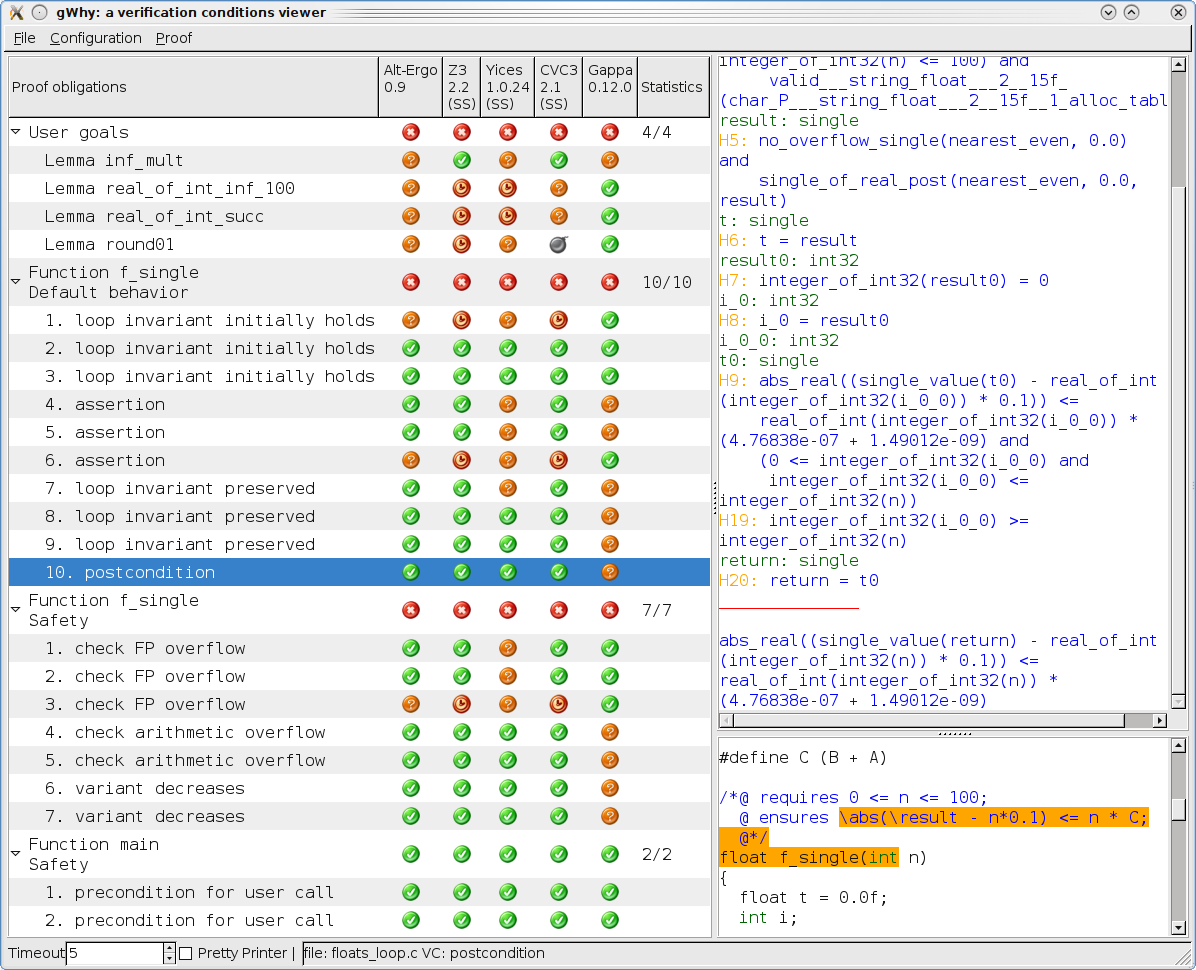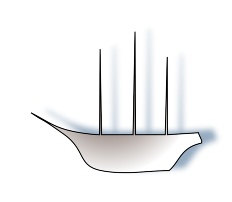

Using Frama-C/Jessie with the strict-IEEE float model, we are able to verify a property on a bound between the computed clock and the expected exact result. We also verify that no overflow can occur.
# pragma JessieFloatModel(strict)
//@ lemma real_of_int_inf_100: \forall integer i; i <= 100 ==> i <= 100.0;
//@ lemma real_of_int_succ: \forall integer n; n+1 == n + 1.0;
//@ lemma inf_mult : \forall real x,y,z; x<=y && 0<=z ==> x*z <= y*z;
#define A 1.49012e-09
// A is a bound of (float)0.1 - 0.1
//@ lemma round01: \abs((float)0.1 - 0.1) <= A;
#define B 4.76838e-07
// B is a bound of round_error(t+(float)0.1) for 0 <= t <= 10.01
#define C (B + A)
/*@ requires 0 <= n <= 100;
@ ensures \abs(\result - n*0.1) <= n * C;
@*/
float f_single(int n)
{
float t = 0.0f;
int i;
/*@ loop invariant 0 <= i <= n;
@ loop invariant \abs(t - i * 0.1) <= i * C ;
@ loop variant n-i;
@*/
for(i=0; i < n; i++) {
L:
//@ assert 0.0 <= t <= 100.0*(0.1+C) ;
t = t + 0.1f;
//@ assert \abs(t - (\at(t,L) + (float)0.1)) <= B;
}
return t;
}
This is proved by a combination of automated provers: SMT solvers and Gappa, as shown by the following GWhy screenshot.
